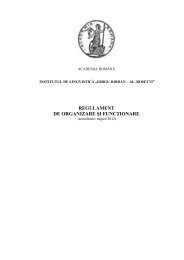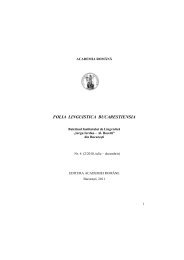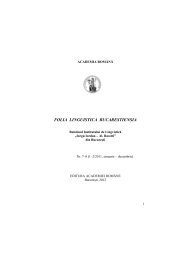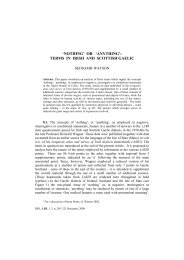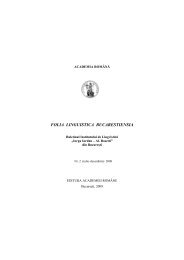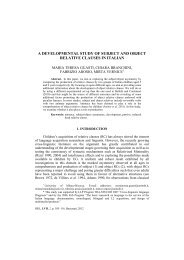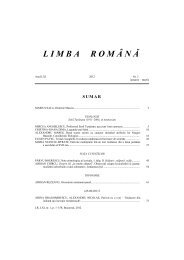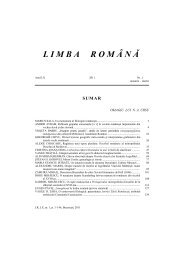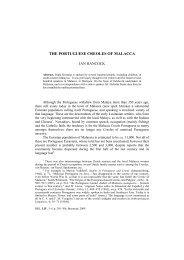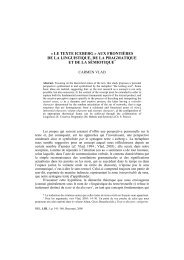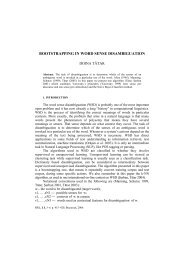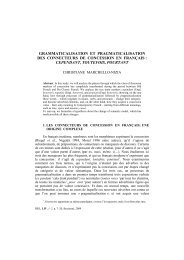PSEUDO-REDUPLICATION, REDUPLICATION AND REPETITION ...
PSEUDO-REDUPLICATION, REDUPLICATION AND REPETITION ...
PSEUDO-REDUPLICATION, REDUPLICATION AND REPETITION ...
You also want an ePaper? Increase the reach of your titles
YUMPU automatically turns print PDFs into web optimized ePapers that Google loves.
252Andrei A. Avram 28In Sinhala, several word classes undergo reduplication. Thus, reduplicatedadjectives express intensification:(116) digəTə ‘long’> digəTə-digəTə ‘very long’ (Seratne 2009: 42)As for verbs, past participles may be reduplicated and denote continuation:(117) gaa-nəvaa ‘painting’> gaa-nəvaa gaa-nəvaa ‘while painting’ (Seratne 2009:199)Reduplication of adverbs with an intensifying meaning is also attested:(118) hemin ‘slowly’ > hemin hemin ‘very slowly’ (Seratne 2009: 42)Reduplicated question words have a distributive meaning:(119) monəvə ‘what’> monəvə monəvə ‘what various things’ (Seratne 2009: 42)In Tamil, noun reduplication expresses distributiveness:(120) viiti ‘street’> viiti viiti ‘each street’ (Kane 2001: 53)A distributive meaning is also conveyed by reduplicated personal pronouns:(121) avan ‘he’ > avan avan ‘each and every man’ (Kane 2001: 53)With adjectives, reduplication expresses intensification:(122) nalla ‘ good’ > nalla nalla ‘very good’ (Kane 2001: 53)Reduplicated infinitives and participles express a habitual meaning, continuityor intensity:(123) a. neruŋka come > neruŋka neruŋka ‘come closer’ (Kane 2001: 53)b. vantu ‘coming’ > vantu vantu ‘coming regularly’ (Kane 2001: 53)Finally, reduplicated question words have a distributive meaning:(124) yaar > ‘who’ yaar yaar ‘which different persons’ (Kane 2001: 53)



